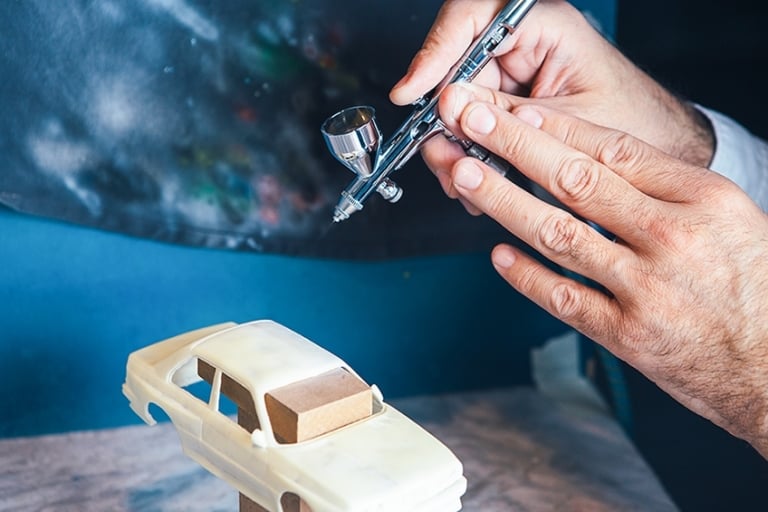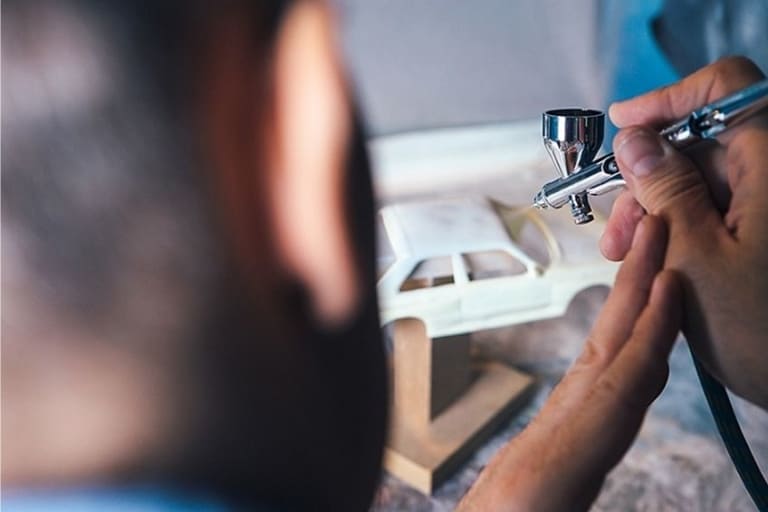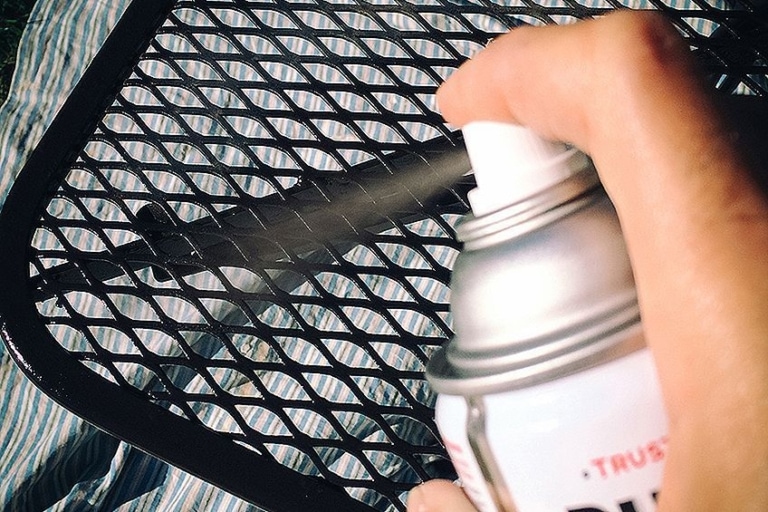Best Outdoor Paint for Wood – Exploring the Best Exterior Paint Reviews
Disclosure: There are some affiliate links below and I may receive commissions for purchases made through links in this post, at now additional cost for you.
When it comes to the best outdoor paint for wood, there are many factors one needs to consider. There are a wide array of products on the market and a good portion of them claim to be the best. With all the factors to consider and decisions to make, the whole process can be a bit of a drag. This article aims to help you find the best outdoor paint for wood by helping you to know what to look for when selecting an exterior wood paint product. We have also compiled a shortlist of some of the best outdoor paint for wood. Read on to find out more!
Table of Contents
- 1 Factors to Consider When Selecting Paint for Wood
- 2 Best Outdoor Paints for Wood
- 3 How to Paint Exterior Wood
- 4 Our Tips and Tricks for Painting Outdoor Wood
- 5 Frequently Asked Questions
- 5.1 Do I Have to Apply a Primer Before Applying Exterior Wood Paint?
- 5.2 Do I Have to Sand Exterior Wood Before Painting?
- 5.3
- 5.4 When Should I Paint Exterior Wood?
- 5.5 How Long Does Exterior Wood Paint Take to Dry?
- 5.6 How Many Coats of Paint Does Exterior Wood Need?
- 5.7 How Can I Make Exterior Wood Sanding Go Quicker?
- 5.8 What Is the Best Outdoor Paint for Wood?
Factors to Consider When Selecting Paint for Wood
Whether you are searching for outdoor furniture paint or waterproof paint for wood there is a lot to choose from which can make it difficult to know exactly which are the ones that are ideal exterior wood paints. Before we present our favorites you might be interested in some of the factors that influenced the selection. What follows will also help you in selecting paint yourself by helping you to avoid purchasing a product that just doesn’t cut it. Later on, in this article, we will guide you through the process of applying paint to wood the correct way.

Primer
Whether you are planning to paint a fence, a deck, or a wooden shed, a primer is of prime importance. A primer will increase the adhesion of the paint to the wood as well as help the paint to achieve better coverage and help you to achieve a better finish. However, applying undercoats and topcoats can be time-consuming and if you are in a rush to complete the project you may be looking for other options.
Lucky for us, some products can help us to half the time it takes to paint a picket fence.
Outdoor furniture paints and exterior wood paints come in two-in-one formulas that include a primer in the paint. This means that there is no need to apply a primer before you paint with exterior wood paints. You can go directly to applying the paint and will be that much nearer to finishing your project.
Durability
Generally speaking, paints for outdoors wood tend to be much more durable as they are formulated to resist harsh weather conditions over extended periods. These conditions include the freezing and thawing of winter months, hot and humid summers in which the UV rays of the sun heat up exterior surfaces, as well as everyday wind and rain. Some paint manufacturers include a warranty on their paints. These warranties range from three years to seven years and more.

These warranties can be a sign of quality assurance and should be taken as such. To find this information and more refer to the information supplied by the manufacturer. You will usually find information like this on the tin or any leaflets that are provided with the products. Be sure to check out some exterior paint reviews like the one included in this article to help you to avoid sub-standard exterior wood paints.
Mold, Mildew and Decaying Fungi
Mold and mildew that is growing on wooden structures whether it is indoors or out is an indication that the wood is damp. Dampness may not be bad to start with but can lead to more serious issues if not addressed as soon as possible. Mildew and mold can be harmful to your health especially if it is inside your home. It may not be too much of an issue on outdoor furniture but the dampness that is synonymous with mold and mildew can lead to the wood beginning to rot.
And on top of that, the same environment in which mold and mildew flourish is the same environment that decaying fungi thrive. These decaying fungi can wreck a deck or any other outdoor wood structure or piece of wooden furniture.
For this reason, it is best to apply waterproof paint for wood to outdoor structures to prevent them from becoming saturated with water and succumbing to mold, mildew, and decaying fungi. Luckily, there are also exterior wood paints that contain mildew and mold inhibitors. These inhibitors do just that – they inhibit mold and mildew growth. These types of paint are ideal for damp and humid climates in which mold and mildew thrive.
Paint Composition
Some terms are thrown around in the paint world. We thought we would cover some of these in the hope that it will clear any confusion as well as help you better understand what we are dealing with when it comes to painting for outdoor wood. A solvent is a liquid that carries the pigments. These evaporate leaving the binders and pigments to coat the wood.
The pigments are usually made from minerals or synthetic powders and they give the paint its color, hue, tone, and so forth. Some additives are sometimes included in the paint formulation such as mold inhibitors or slow drying agents, which slow the drying time. This makes the paint easier to work with. Binders are the ingredients that hold everything together once the solvents have evaporated.

When we use the coverage we are usually referring to how far the paint will go. This is usually indicated in square feet and is usually found on the paint tin or an accompanying information leaflet or package. You can use this indication to work out the quantity of paint you will need. However be aware that this is a rough indication as raw, unsealed, porous wood will absorb a lot of paint which may require more coats than sealed wood or hardwood and primed wood.
VOC refers to volatile organic compounds, indicating the levels of toxicity within your paint. VOC usually refers to the solvents that you want to avoid breathing in as these can be harmful.
Whatever paint you are using it is always a good idea to use the paint in a well-ventilated area.
Best Outdoor Paints for Wood
If the above section was a little bit too much information to digest we have created a shortlist of the best outdoor paints for wood. There are heaps of options on the market that can make it difficult to decide on which outdoor paint for wood is best. Whether you are looking for the ideal outdoor furniture paint or the best waterproof paint for wood, this list, and the accompanying exterior paint reviews should help narrow things down for you. Later on, in this article, we will guide you through the process of applying exterior wood paint!
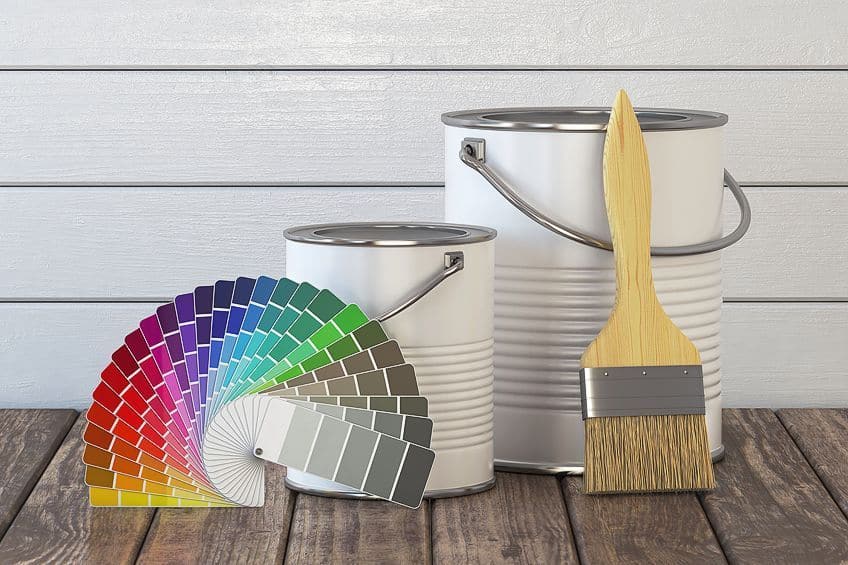
Best Exterior Wood Paint for Fences and Siding: KILZ Exterior Oil-Latex-Based Paint
Kilz’s Exterior Oil-Latex-Based paint is ideal for wooden fences and siding. This durable exterior paint resists cracking, peeling, and blistering. Depending on how porous the wood is that you are dealing with, it can cover up to 200 square feet. This formulation dries to the touch in two to four hours and the consistency is ideal for applying to vertical surfaces where gravity can play havoc. Once dry this paint will not harm wildlife or livestock. Kilz’s Exterior Siding, Fence, and Barn Paint are ideal for protecting your exterior surfaces for years to come!
- Paint offers coverage and protection against exterior elements
- Exterior paint resists cracking, peeling, and blistering
- Offers exceptional adhesion, longevity, and versatility
PROS
- Durable
- Weather-resistant
- Good coverage
- Ideal for exterior wood
- Self-priming
CONS
- Does not have a pleasant smell
Best Exterior Wood Paint for Porch and Patio Floors: KILZ Low Luster Enamel
Kilz’s Low Luster Enamel is specially formulated to protect wooden floors of patios and porches. It is a very durable paint that resists scuffing and peeling. The finish of this paint is mildew resistant, which makes it ideal for those hot and humid environments in which mildew flourishes. This paint applies smoothly and dries in just one hour and it can be applied with brushes, rollers, or even an air sprayer. Kilz Porch and Patio Floor paint can cover up to 400 square feet depending on the porosity of your project
- The paint is highly durable and resistant to scuffing and fading
- Suitable for use on interior or exterior surfaces
- Weather and mildew-resistant paint offers superior coverage
PROS
- Mildew resistant finish
- Durable
- Quick-drying
- Easy application
- Ideal for exterior wood floors
CONS
- Primer required
Best Exterior Wood Paint for Furniture: COUNTRY CHIC Chalk Style Eco-Friendly Paint
Country Chic’s Chalk Style Paint is a durable paint that is suitable for interiors and exteriors alike. This paint has been specially formulated for furniture but can also be used for smaller wooden craft projects. This paint does not require extensive prep work before you apply the paint as it contains a built-in primer and topcoat. This paint dries to a chalky matte finish which can be manipulated into popular distressed antique look finishes easily. This specialty paint is eco-friendly, safe to use, and is low in VOC.
- Suitable for a range of materials, especially wooden furniture
- The paint has great adhesion, coverage, and durability
- Contains a built-in primer and top coat for ease of use
PROS
- Eco-friendly
- Ultra-low in VOC
- Durable
- Ideal for furniture
- Ideal for achieving a chalky finish
CONS
- Not ideal for large exterior surfaces
How to Paint Exterior Wood
Now that you have selected paint for outdoor wood you are just about ready to paint. Before you get painting it is best to plan. Painting in the morning to escape the midday heat is ideal as there is nothing worse than painting outdoors while the sun is beating down on you.
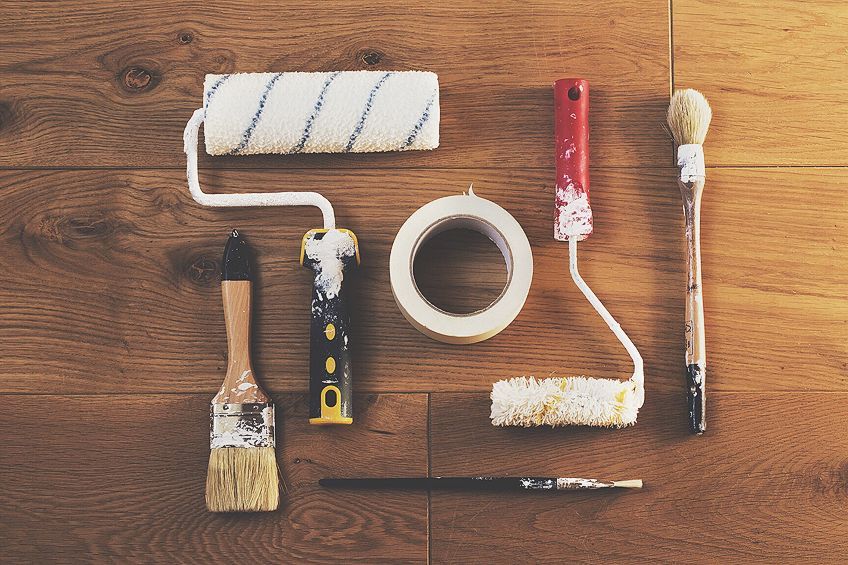
Another thing you will want to do is check the weather report to make sure that there is no rain forecast as rain could put a damper on your efforts. Whether you are painting a piece of outdoor furniture, a picket fence, siding or a garden shed, what follows is an overview tutorial to guide you through the process and help you to get the best out of your paint.
Prepare the Wood
The first thing you will want to assess is the water content of the exterior wood that you plan to paint. There are a lot of one-star reviews on Amazon complaining about paint peeling after a week. The fact is that if you paint wet wood, even with the highest quality paint, the bond will fail. The exterior wood needs to be dry for the paint to adhere. If you are unsure you can buy a moisture meter from your local hardware store.
If the moisture content is too high you may need to wait a few days or wait for the drier months before you paint the wood.
If you are working with an old wooden structure that has old paint on it you will need to scrape away as much flaky and loose paint as possible as loose paint can always impair the bond of the new paint to the surface. You can scrape the old paint by hand using a paint scraper. If you are working on a large surface area such as siding or a wooden shed you can use a scraping attachment on an oscillating tool. This can speed the process up dramatically as well as be less physically draining.
While you are scraping away loose paint you may come across soft rotting areas of wood. You can use your scraping tool to remove these as there is no point in painting over rotten wood. The divots and gaps that were left in your wake will need to be filled with a wood filler that is designed for exterior use. Use a putty knife to patch the imperfections and smooth them off. Once you have filled any holes, gaps, or divots in the surface of the wood you will need to leave the wood filler to dry. The drying time will vary from one manufacturer to another. Refer to the directions for the exact drying times.
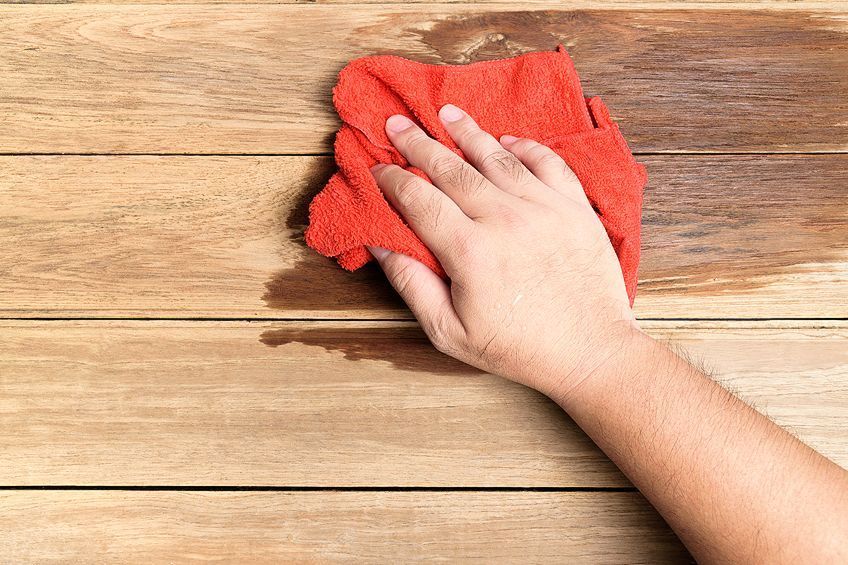
Washing the surface of the wood with a degreaser is recommended to remove any latent grease, oil, or grime from the wood that could impair the bond of the paint. Mix about a quarter of a cup of TSP with a gallon of warm water and use the solution to scrub the surface. The surface will need to be rinsed thoroughly and left to dry completely before moving on to the next step. A powerwash can speed this process up but remember the wood needs to be completely dry before you paint so plan accordingly.
Sanding
Sanding is a very important step but good to remember that you do not need to remove the old paint entirely. The idea here is to create a surface profile that will welcome the paint and provide a roughened surface that the paint can bite onto. This will improve the bond of the paint. Sanding by hand can be effective when the sandpaper is used in conjunction with a sanding block.
These sanding blocks are ideal for flat surfaces but you may have a problem using them in tricky areas like nooks and corners.
Try using a sanding sponge for these tricky areas. A sanding sponge works just as well on flat areas too. You will want to use fine-grit sandpaper (such as 200 to 400 grit) and work over the entire area of your project. This process can be tedious. If you are working on a big project you will want to use an orbital sanding tool. This will take the strain off your elbow and get the job done much faster.
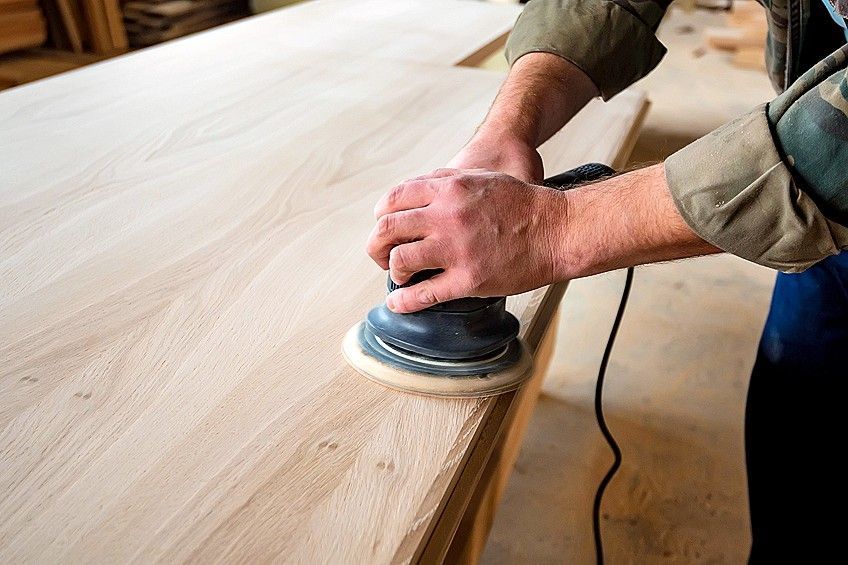
Use a tack cloth or a lint-free cloth to remove the dust and grit from the surface of the wood. Tack cloth works the best but you can also use a vacuum cleaner in conjunction with a brushing attachment to remove the dust. Removing the dust will improve the adhesion as well as the overall finish.
Priming and Painting
Applying a primer to exterior wood before painting is the best practice. You may feel that because you have chosen paint with a built-in primer that you can skip the primer. This may be the case and your paint may very well last a long time. However, for the best results, you will want to apply primer first, the reason being that some wood can be more porous which will absorb a lot of the paint. This may result in you having to use more paint than you expected.
A single thin coat of primer can go a long way in helping the paint gain good coverage as well as help you achieve a better finish.
If any areas need to be masked now is the time to do it. Masking tape is great for covering up any fittings that cannot be removed. If you are concerned about any surfaces that you might get paint on unwillingly you can use a drop cloth, an old tarp, or newspaper to protect these areas from accidental spills. Decant some of the primers into a painter’s tray to make it more accessible and use a brush to cut in all the corners, nooks, and edges of your project before using a roller to attack the larger areas.
Once you have applied the exterior wood primer to the wood, allow it to dry before moving on to the painting. As long as the primer has dried to the touch, you are ready to go. The drying time will vary between products and the temperature and climate will also influence how long it takes to dry. The best thing to do is to refer to the manufacturer’s instructions and consider the weather as well.

As you did with the primer, cut in the edges, nooks, and corners of your project using a small brush. The quality of your brushes can make a big difference in the quality of your finish. Bear this in mind when selecting brushes for painting exterior wood. Once the tricky areas have been cut in you can proceed to paint the rest of the project using a roller.
Once you have completed painting your first coat of paint for outdoor wood, let it dry according to the manufacturer’s directions before you begin to apply the second coat. Applying two coats of exterior wood paint is always recommended but sometimes you can get away with a single coat. However, for the best results, you will want to apply multiple coats as this will increase the thickness of the coating which will only add to the durability of the finish.
On completion of the painting process, you can begin cleaning up your brushes and removing the drop cloth and painter’s tape. Once the paint is dry, you can replace any fittings that you have removed. If you have made it this far, you have worked hard and completed the arduous task of painting exterior wood. It is time to treat yourself!
Our Tips and Tricks for Painting Outdoor Wood
Painting your outdoor wood can be a tricky task to tackle, especially if you are not experienced with this type of project. To help you out, we have gathered together our top tips for painting outdoor wood.
- Choosing to apply a primer, regardless of whether or not your exterior wood paint has a built-in primer or not, will guarantee better coverage, a smoother finish, as well as a better adhesion of the paint, thus resulting in a more durable finish.
- When selecting outdoor paint for wood, keep a lookout for paints that come with a warranty. This is usually a clear indication of the product’s quality. Read exterior paint reviews to pair paints against one another to find the right one for you.
- Opting for exterior wood paint that contains a mold and mildew inhibitor is a wise move, especially if you live in a hot and humid climate in which mold and mildew thrive. As the name suggests these mildew and mold inhibitors prevent mold and mildew growth. If you cannot get mildew-resistant paint, you can use a varnish finish to achieve the same effect.

- If you are concerned about using paints that contain potentially harmful chemicals, you can opt for exterior paints that are ultra-low in VOC These types of paints are eco-friendly.
- For the best results, it is recommended that you apply more than one coat of exterior wood paint. This will ensure a more durable coat of paint that will stand up to the elements and protect the wood for years to come.
- In hot and dry climates, you will want to avoid painting in the midday heat. Not only is this uncomfortable but the paint can also begin to dry prematurely which can make the whole process difficult.
- When referring to the manufacturer’s instructions, use the drying times as a guideline as the climate will influence the length of time it takes for the paint to dry. Paint will dry faster in hot and humid climates and slower in colder weather.
Choosing the best outdoor paint for wood can be an overwhelming task. The number of manufactures and variety of formulations can make it extremely difficult to settle on the ideal exterior wood paint for your project, especially if you have little experience in DIY. Learning about the factors that make a quality paint for outdoor wood can be time-consuming. The easiest way around this is to refer to exterior paint reviews like the one earlier in this article. This should help you to find the ideal paint so you can get on with your project.
Frequently Asked Questions
Do I Have to Apply a Primer Before Applying Exterior Wood Paint?
If you have chosen an outdoor paint for wood that contains a built-in primer or is self-priming you will be able to get away with not applying a primer to the wood. However, for the absolute best results, you may want to apply a primer to the wood before painting.
Do I Have to Sand Exterior Wood Before Painting?
When painting exterior wood it is recommended that you sand the surface of the wood before painting. Just a light sanding with fine-grit sandpaper will do the trick. You just want to roughen up the surface of the wood to create the ideal surface profile for the paint to bite onto.
When Should I Paint Exterior Wood?
You should avoid painting in temperatures lower than 50 degrees Fahrenheit (degree celsius). Painting in the morning is ideal but it is best to wait for the morning dew to evaporate before painting as moisture can severely inhibit the adhesion of the paint to the wood.
How Long Does Exterior Wood Paint Take to Dry?
Some paint will dry to the touch in as little as one hour but other paints dry to the touch in up to six hours. Most exterior wood paints can even take several days to fully cure. Refer to the paint’s instructions for the exact drying times and remember that climate will affect these times slightly.
How Many Coats of Paint Does Exterior Wood Need?
As a rule of thumb, you should plan to apply two coats of exterior wood paint. You will need to wait for the first coat to dry to the touch before you apply the second coat. Generally speaking, applying multiple coats of paint will ensure a more durable finish.
How Can I Make Exterior Wood Sanding Go Quicker?
Whether you want to speed up the paint scraping or sanding of exterior wood the best way to do this is with power tools. Use an orbital sander for sanding and a scraper attachment on a rotary tool to quicken the scrapping of old paint.
What Is the Best Outdoor Paint for Wood?
The best exterior paint for wood is latex-based exterior wood paint. These paints can expand and contract in fluctuating temperatures and offer good durability and cleanability. If you are looking for the absolute best exterior paint check out some exterior paint reviews like the one early in this article.





